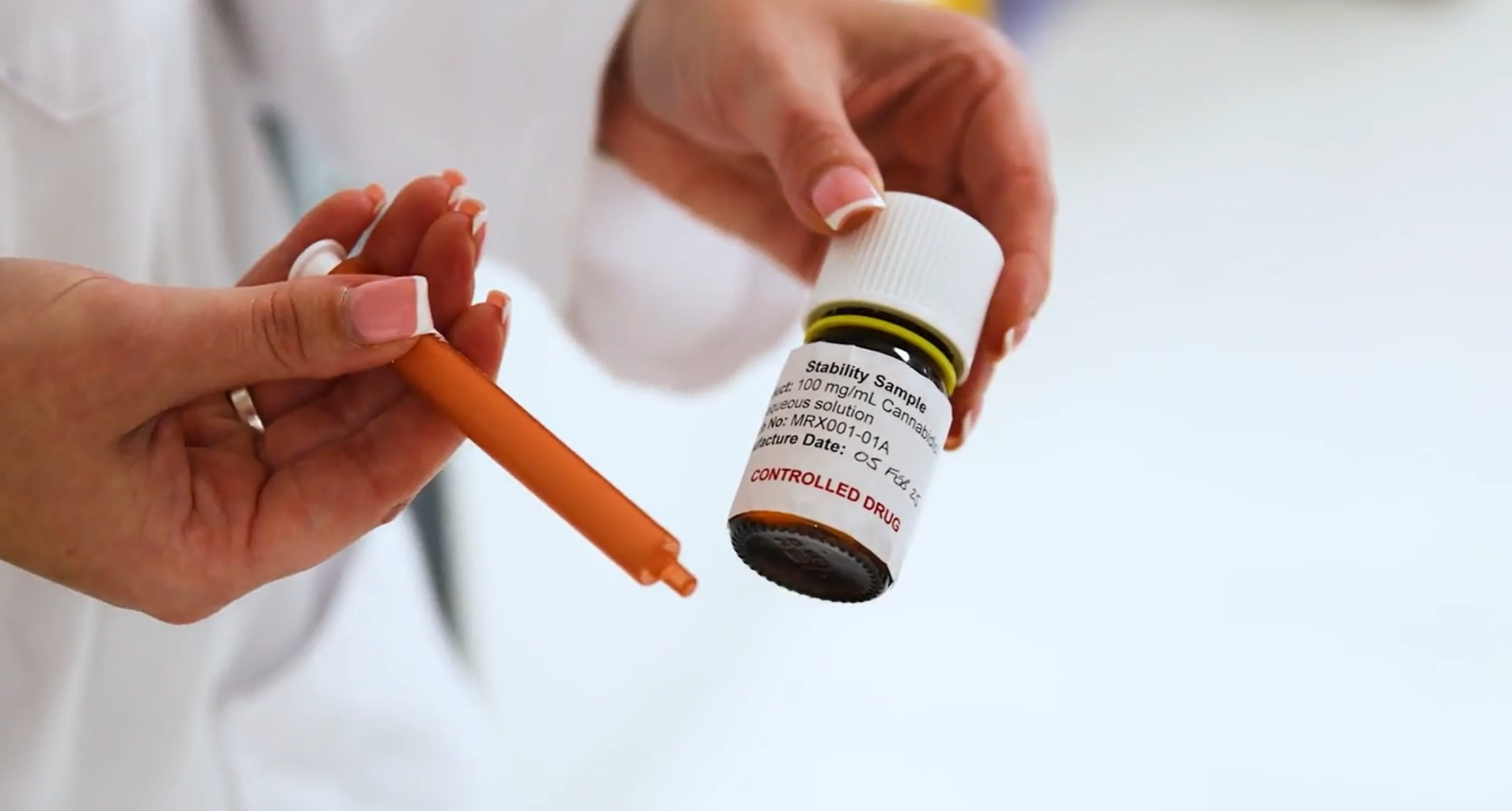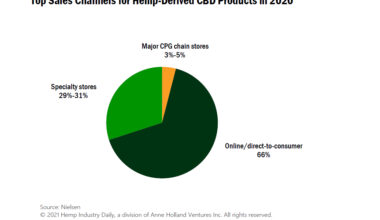Millions of women around the world live with an incurable and poorly treated condition, and many are turning to cannabis products for relief – despite inconsistent results and the risk of untested products.
For Melissa Sturgess, the CEO of London-based biotech firm Ananda Pharma, this situation presents an opportunity, she told MJBizDaily.
Ananda Pharma is applying pharmaceutical-grade rigor to cannabinoid research to develop what could become the first regulator-approved CBD treatment for endometriosis, a painful condition where uterine-lining-like tissue grows outside the uterus.
This path reflects a broader shift in cannabis: credibility depends on proof, not promises, a point that’s becoming harder for the industry to ignore.
That’s a theme Sturgess will amplify next month at MJBizCon in Las Vegas.
Along with other women who are leading health-focused companies in the cannabis space, she’ll explain why the future belongs to operators who can quantify their impact and back every claim with results.
A painful condition, with no cure – treated with cannabis
Endometriosis affects roughly 10% of women of reproductive age worldwide, according to the World Health Organization. This chronic disease has no cure and treatment often resorts to symptom management.
It also remains severely under-researched. Only 0.038% of the National Institutes of Health research budget is dedicated to researching the condition, according to a recent estimate.
To fill that gap, women are turning to CBD products for relief.
But there’s only one pharmaceutical-grade, regulator-approved CBD-based drug. And as of now, Epidiolex can only be prescribed to treat severe epilepsy.
Meanwhile, many hemp-oil based formulations available are sold over-the-counter in the United States, including at smoke shops and gas stations. That means unsuspecting buyers don’t always know what they’re getting.
And the situation isn’t much better even within the patchwork of state-regulated medical cannabis markets.
Women kept demanding a cannabis-based medicine
Since cannabis remains federally illegal, research is stymied, and would-be cannabis medicines are shut out from the expensive and lengthy Food and Drug Administration (FDA) approval process.
Cannabis products that do make any claims of treating a condition or providing health benefits run the risk of penalties and fines.
Despite all this, women kept coming to their doctors and kept asking for CBD, Sturgess said.

And so the doctors went to Sturgess.
“We were approached by specialists who were being asked by patients to prescribe CBD for their chemotherapy-induced neuropathy and for endometriosis,” she said.
“They came to us looking for a formulation that could be used in clinical trials.”
For Sturgess, that was a turning point.
She realized broad patient access to medical cannabis would only come through the formal regulatory pathway.
Ananda Pharma is pursuing cannabis-based medicine research
For its CBD-based treatment, Ananda is pursuing full drug-approval pathways in the U.K., where most healthcare flows through the National Health Service (NHS).
Unlike in the U.S., where full health insurance coverage for marijuana treatments remains a distant dream, the NHS does cover medical cannabis.
However, NHS covers cannabis only a very small number of people – and only for a small number of conditions.
Endometriosis is not one of them.
That’s largely because the NHS reimburses only medicines proven in randomized, controlled trials.
For cannabis medicines, the incentive is clear: prove efficacy, or remain outside mainstream care.
The success story with Epidiolex shows medicines derived from naturally sourced cannabinoids can meet full regulatory standards while delivering value for both patients and investors, Sturgess said.
Building on that precedent, Sturgess focused Ananda’s efforts on a single indication: pain associated with endometriosis.
The ultimate goal is to advance their leading formulation, MRX-1, into a labeled therapeutic that’s prescribable and reimbursable.
The path forward for a cannabis medicine
To do that, Ananda follows a conventional biotech model with placebo-controlled designs, standardized dosing, and measurable endpoints.
Ananda reached its first milestone this year with a healthy volunteer study in which 20 participants were dosed under hospital supervision.
The findings from early-stage clinical testing will inform a larger patient trial planned for 2026.
If successful, MRX-1 could become the first cannabinoid-based prescription medicine developed specifically for women’s health pain.
Sturgess says the milestone is already resonating with investors as regulators in the U.S. and abroad move toward clearer medical pathways for cannabinoids.
Subscribe to the MJBiz Factbook
Exclusive industry data and analysis to help you make informed business decisions and avoid costly missteps. All the facts, none of the hype.
What you will get:
- Monthly and quarterly updates, with new data & insights
- Financial forecasts + capital investment trends
- State-by-state guide to regulations, taxes & market opportunities
- Annual survey of cannabis businesses
- Consumer insights
- And more!
Lessons from biotech for the cannabis industry at MJBizCon
The company’s early progress has drawn attention, as Sturgess discovered when she attended a women and wellness focused breakfast at a conference in June.
“Everyone said, ‘Finally, someone’s doing the work,’” she recalled.
Ananda’s path reflects a broader shift in cannabis. Credibility depends on proof, not hype or promises.
At MJBizCon – where Sturgess and three other women CEOs of health-focused companies will speak at the science symposium on Tuesday, Dec. 2 – calls for evidence are likely to echo across the showroom floor.
Tightening margins and rising investor scrutiny are forcing operators – from cultivation tech to consumer packaged goods – to back performance with measurable data.
Sturgess’s advice for operators preparing to compete in a data-driven future is simple.
“Stay focused,” she said. “There are a lot of shiny distractions in this space, but staying true to your mission and the data is everything.”
Medical Disclaimer:
The information provided in these blog posts is intended for general informational and educational purposes only. It is not a substitute for professional medical advice, diagnosis, or treatment. Always seek the advice of your physician or other qualified healthcare provider with any questions you may have regarding a medical condition. The use of any information provided in these blog posts is solely at your own risk. The authors and the website do not recommend or endorse any specific products, treatments, or procedures mentioned. Reliance on any information in these blog posts is solely at your own discretion.






